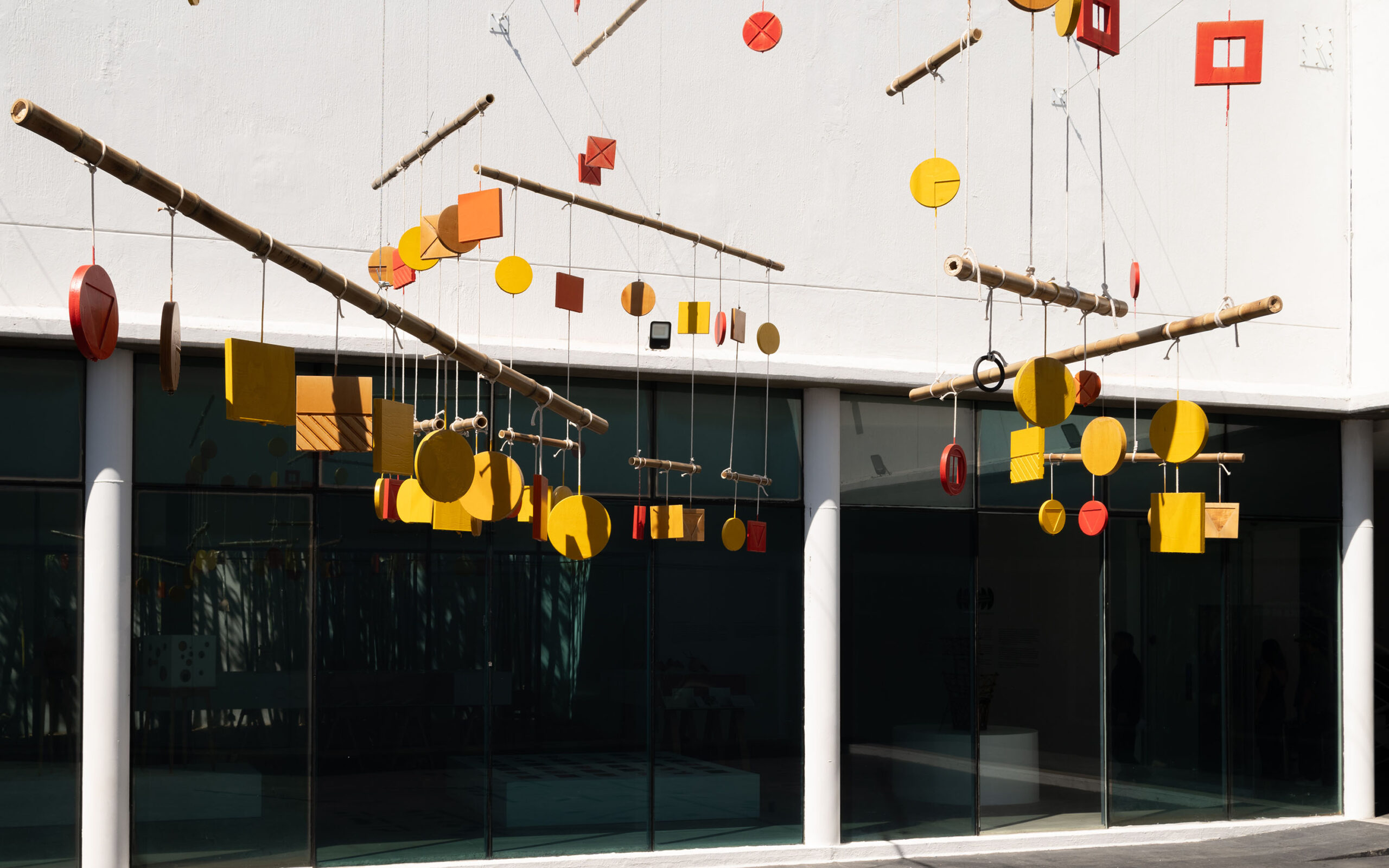

























Constellations: Transgenealogies and Invisible Alliances | Santiago Borja
From October 26th, 2024 to March 2nd, 2025
Program of Interventions into Public Space
Patio MAZ
“My purpose is to make ‘kin’ mean something other/more than entities tied by genealogy or ancestry. The gently defamiliarizing move might seem for a while to be just a mistake, but then (with luck) appear as correct all along. Kin making is making persons, not necessarily as individuals or as humans.”
– Donna Haraway
The starting point of Constellations is one of the key diagrams charting kinship relations in the structural anthropology developed by Claude Lévi-Strauss. This theory examines how, in different societies, kinship may pass through a maternal or a paternal line, in either case excluding certain members of the family who do not share in this pre-established affiliation and so making for different kinds of alliances. In this way, Lévi-Strauss sought to demonstrate that symbolic kinship is stronger than biological kinship.
Although the anthropological structuralism of Lévi-Strauss is now widely challenged ―owing particularly to its schematic nature and its tendency to seek universal formulas, independent of the different cultures or historical moments from which they emerge―, we would like to salvage here the notion that what gives us identity is not an inherent individual essence. Identity is conferred by the temporary positions we occupy within a system, and we are therefore constituted by a network of relations rather than by permanent and invariable attributes. This makes way for thinking about identity as something dynamic, for once relations change, features of identity change as well.
In this way, Constellations challenges the idea that the social structures into which we are born are fixed and that we are therefore irremediably determined by our social and family environment of origin.
At the same time, the project juxtaposes the theme of kinship structures with the therapeutic application of family constellations, whereby, through an introspective process, the relations that participants maintain with their own family environments can be explored. This therapy, constructed out of a psychodramatic dynamic not immune from a certain theatricality, posits that people are capable of perceiving unconsciously the models and patterns existing in family relationships. These patterns create defining emotional and cognitive networks that generate “invisible loyalties,” which are then transmitted from generation to generation, producing a sense of belonging to a clan or family group.
According to Bert Hellinger, who gave the term its currency, “constellation” is a shorthand for the more correct term Familienaufstellung, which might be defined as “locating the family within space.” In his view, there is a series of laws that explain the tragic events that often arise among members of the same family. But these can be reversed when the order of the family system is reestablished and the various members are encouraged to occupy the place that corresponds to them within the system, so that in this way they can assume their genuine responsibilities.
Constellations therefore translates the two-dimensional diagram of classical structural anthropology, in juxtaposition with the family constellation, into a mobile three-dimensional structure, which shows these social dynamics in a constant process of change and transformation. The mobile structure is active rather than static, formed of balances and counterweights, serving to address issues of new family configurations (LGBTQ+), unconventional affiliations, and trans-species relations, but also the social determinism and socio-economic inequalities prevailing in the society in which we live.
Inspired by the thought of Donna Haraway, Constellations counterpoints kinship structures with family constellations, thereby reformulating a family inheritance that goes beyond the purely genetic or cultural. It invites us to establish new emotional alliances and oddkins with everything that lives, so that who and whatever we are may help us to make-with ―become-with, compose-with― the earth-bound.

Info
Date:
17 October, 2024
Category:
